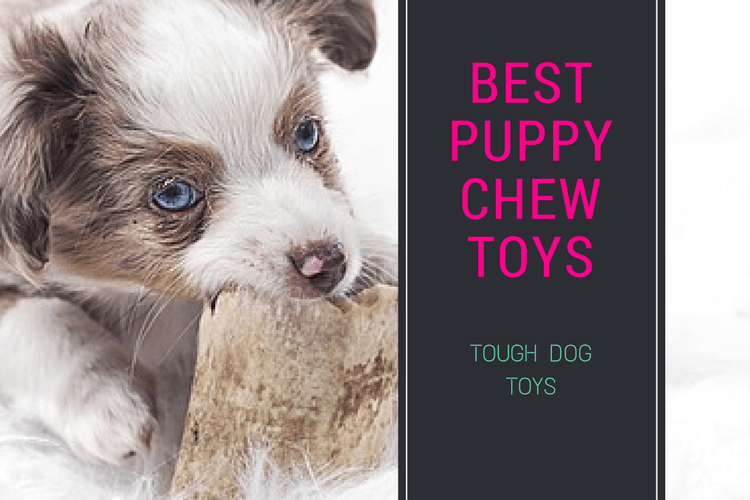
Is there anything more worrying To a dog parent than Loss of appetite in dogs?
No There isn’t!. Because the first thing that comes to mind is “My baby is sick!”
Why Is My Shih Tzu Not Eating
Be very careful here and take these signs VERY SERIOUSLY! Loss of appetite can be used as a great diagnostic tool! if you know how to use the symptoms.
Especially if your Pup is no longer fond of her favourite snack/dog food. For example if your pup is normally (very) fond of boiled eggs (which by the way are fantastic and densely packed with nutrition) and all of a sudden if she no longer jumps up 10 vertical meters to get that piece of boiled egg, then this could be a sign of a serious health issue. Very sadly my darling Kimmi showed the same symptoms before she passed away! 🙁 🙁
How to motivate a dog to eat?
Good nutrition is essential in pet care. High quality nutrition plays a key role is making your dog grow healthily. It is also important to feed your dog the right amount of balanced diet. How and how much you feed your dog is the best way to prevent long-time nutritional-induced diseases.
Weight loss and decreased appetite may reflect many issues, and the first one to take into consideration is illnesses. Sick dogs will stop eating due to an underlying pain or discomfort. It is important to distinguish this from the dog who does not eat because of food dislike.
Dog not eating – How to figure out whether my dog is sick or just not willing to eat?
First you need to test the dog’s willingness to eat. Give your dog pieces of the dog food he usually eats, all you have to do is to figure out whether your pet wants to eat but he cannot eat. (e.g. swallowing difficulty) or he is unwilling completely to eat.
Before you take action, please ask
Family members
Neighbours
to see whether they haven’t been feeding the pooch outside the regular feeding sessions & to make sure garbage bins were not raided!.
- If the dog’s loss of appetite continues for more than one day, You must visit your veterinarian.
- There are more accurate & effective ways your DVM can asses the situation using
X-rays
Ultrasound
Urinalysis
Fecal testing
If the dog has not eaten for a long period, he does need a perfusion of glucose and electrolytes to get rehydrated and correct his blood electrolyte imbalance that may threaten his life.
Common reasons for Loss of appetite and diarrhea in dogs
All pet parents know it when their dog is sick, the loss of appetite is noted with other signs like fever, diarrhea caused by an an upset stomach, dizziness, etc. Pain and fever are major causes of loss of appetite and controlling them often gets the dog back to regular eating habits.
.

Is Loss of appetite in dogs dangerous?
Dogs do not support fasting for more than 2 or 3 days1, the main consequences of anorexia are the disturbance of blood electrolytes level and gastrointestinal health problems.
As dogs get older they will be less active and therefore need less food to sustain their lifestyle. This should not be interpreted as a lack of appetite or as being a picky eater.
Many studies on the restriction of food intake [3, 4] have shown that dogs fed with 25% less than normal dogs eat have longer lifespan ( + 2 years ), develop less body fat, as well as less predisposition to bone and joint health problems.
.
It is completely normal for bitches to manifest a temporary loss of appetite around the 3 weeks of gestation. This may last few days and is not a health concern, then she continues to eat regularly.
Factors that can contribute to loss of appetite?

Loss of appetite is a symptom that has many common causes, it may be due to many factors, like the dog’s willingness to eat, body condition and health status, for picky eaters, the food and its preparation may influence the dog’s appetite.
-
Illnesses
Diseases that are associated with vomiting, or nausea may cause the development of food aversion, resulting in capricious appetite loss in dogs, some diseases result in reduced sense of smell therefore a lack of appetite, low phosphorus intake, vitamin B1 deficiency (Read and Harrington (1981)) or dental disease. kidney disease which could lead to kidney failure and other serious renal issues also could be an underlying reason. Kennel cough is also a contributing factor for lack of interest in food.
Other Diseases that can contribute are
Liver Disease
Heart Problems
Infections
Hypothyroidism
Hypercalcemia
Parvovirus
-
Anxiety and stress
Many hormones in the body inhibit appetite like serotonin, also changes in plasma concentrations of specific nutrients is also responsible for the decline of food intake.
Stress and anxiety can also lead to anorexia, emotional stress (e.g. loss of companion or a favourite family member), There is also a learned behavior of food aversion.
Being left alone for long times in a kennel could also trigger food avoidance and separation anxiety.
-
Use of some drugs
some oral medications can cause anorexia as a side effect, let your vet know when your dog refuses to eat after some medications.
-
Diet Appetence
Food smell, composition, texture especially of dry food, temperature and moisture are factors that affect palatability and therefore dog’s appetite.
-
Social environment
Departure of a family member or a Pup that he was close to or used to play with also can wreak havoc on the regular eating habits.
How to cope with and Treat dogs that refuse to eat?

It is important to ask your vet to rule out any underlying cause for the anorexia, nausea and vomiting are a cause of anorexia that can only be treated with medications, here are some steps to do when your pet refuses to eat:
- Eliminate any stressing factors at mealtimes in the dog’s environment (other dominant dogs, cats…) and keep feeding area clean. If you feed him along with other dogs, let the dog eat on his own, away from the others.
- If the dog has been prescribed some drugs, make sure he takes his oral medications.
- When dog refuses his old food (food aversion), try to feed him a more appetizing food. Choose a complete and balanced, energy-dense foods. And make sure to respect your dog’s medical condition. Try to mix things up, for example if you normally feed wet food or canned food then try dry food, or boil some sliced chicken breasts with potatoes, carrots and pumpkins, add a handful of boiled rice to the mixture and feed your pup.
- If the dog still refuses to eat, you have to hand feed him. Hand-feeding will give it the necessary attention and the validation it seeks from the pack!
- Give rewarding and praising to the dog to encourage him to eat.
- Check for signs of dental disease by visually inspecting teeth, lookout for any foul smells, loose or missing teeth, discolored surfaces on teeth, which could indicate dental problems!
- Appetite stimulation: these drugs may be helpful, monitor your pet for any side effects like vomiting or diarrhea7.
- if he is still reluctant to eat, assisted feeding should be done, anorexia that persists for 3-5 days requires a form of nutritional support using enteral feeding with feeding tubes (Nasogastric tubes)
- Dog owners should establish a regular habit/routine of feeding their pups at fixed times daily, so that dog’s eating habits can be identified and abnormal eating patterns, and eating disorders can be detected.
Tips to increase foods palatability

Commercial food palatability is various, food with rich composition, more to make your dog’s food more appetent:
- Warm the food slightly and if possible add warm water just before serving, or give small portions of fresh or canned foods
- Adding fat or protein to the diet improves palatability, but care should be taken to the dog’s medical condition (uremic and pancreatitic dogs).
- Add sweet flavor (sugars or syrups) or salt, caution should be exercised with pets having diabetes or pets with cardiac or renal diseases when adding salt.
- Feed a food with smaller kibble pieces to minimize chewing
- Always prefer fresh foods, this can stimulate appetite, if possible add commercial aromas.
- Offer multiple foods to give the dog free choice for food. Do not leave served food for extended periods of time.
homemade diets are a good alternative for dogs as they contain fresh amino acids and natural vitamins, these diets are healthy and appetent, fresh foods contain fresh nutrients, Studies have shown that these diets are sufficient in energy, and have a higher proportion of vitamins especially in vegetables and fruits.
How to introduce a new food for the dog?

References:
- Case, L. P., Daristotle, L., Hayek, M. G. & Raasch, M. F. Canine and feline nutrition: a resource for companion animal professionals. (Elsevier Health Sciences, 2010).
- Bosch, G., Hagen-Plantinga, E. A. & Hendriks, W. H. Dietary nutrient profiles of wild wolves: insights for optimal dog nutrition? Br. J. Nutr. 113, S40–S54 (2015).
- Lawler, D. F. et al. Influence of lifetime food restriction on causes, time, and predictors of death in dogs. J. Am. Vet. Med. Assoc. 226, 225–231 (2005).
- Kealy, R. D. et al. Evaluation of the effect of limited food consumption on radiographic evidence of osteoarthritis in dogs. J. Am. Vet. Med. Assoc. 217, 1678–1680 (2000).
- Delaney, S. J. Management of anorexia in dogs and cats. Vet. Clin. North Am. Small Anim. Pract. 36, 1243–9, vi (2006).
- Okamoto, Y., Ohtani, N., Uchiyama, H. & Ohta, M. The feeding behavior of dogs correlates with their responses to commands. J. Vet. Med. Sci. 71, 1617–21 (2009).
- Zollers, B., Wofford, J. A., Heinen, E., Huebner, M. & Rhodes, L. A Prospective, Randomized, Masked, Placebo‐Controlled Clinical Study of Capromorelin in Dogs with Reduced Appetite. J. Vet. Intern. Med. 30, 1851–1857 (2016).
- Streiff, E. L. et al. A comparison of the nutritional adequacy of home-prepared and commercial diets for dogs. J. Nutr. 132, 1698S–1700S (2002).

![12 Best Dog Foods for Toy Breeds [Buyer's Guide] 12 Best Dog Foods for Toy Breeds [Buyer's Guide]](https://shihtzuexpert.com/wp-content/uploads/2019/05/3-5.jpg)
![6 Best Dog Treadmills for 2023 [Buyer’s Guide] 6 Best Dog Treadmills for 2023 [Buyer’s Guide]](https://shihtzuexpert.com/wp-content/uploads/2019/04/Best-Dog-Treadmills-1.png)

